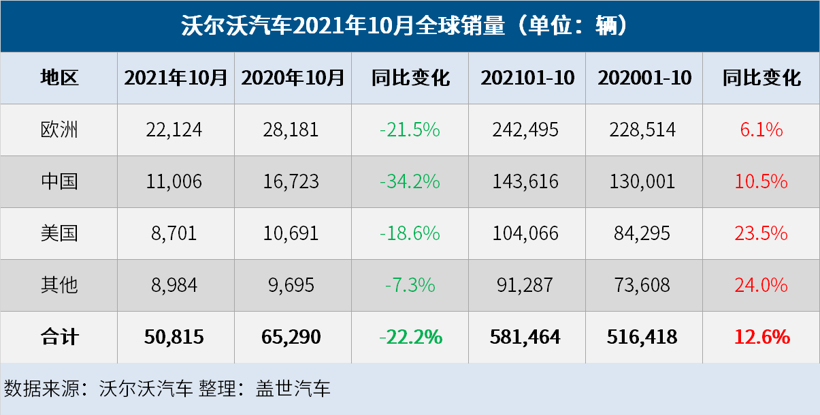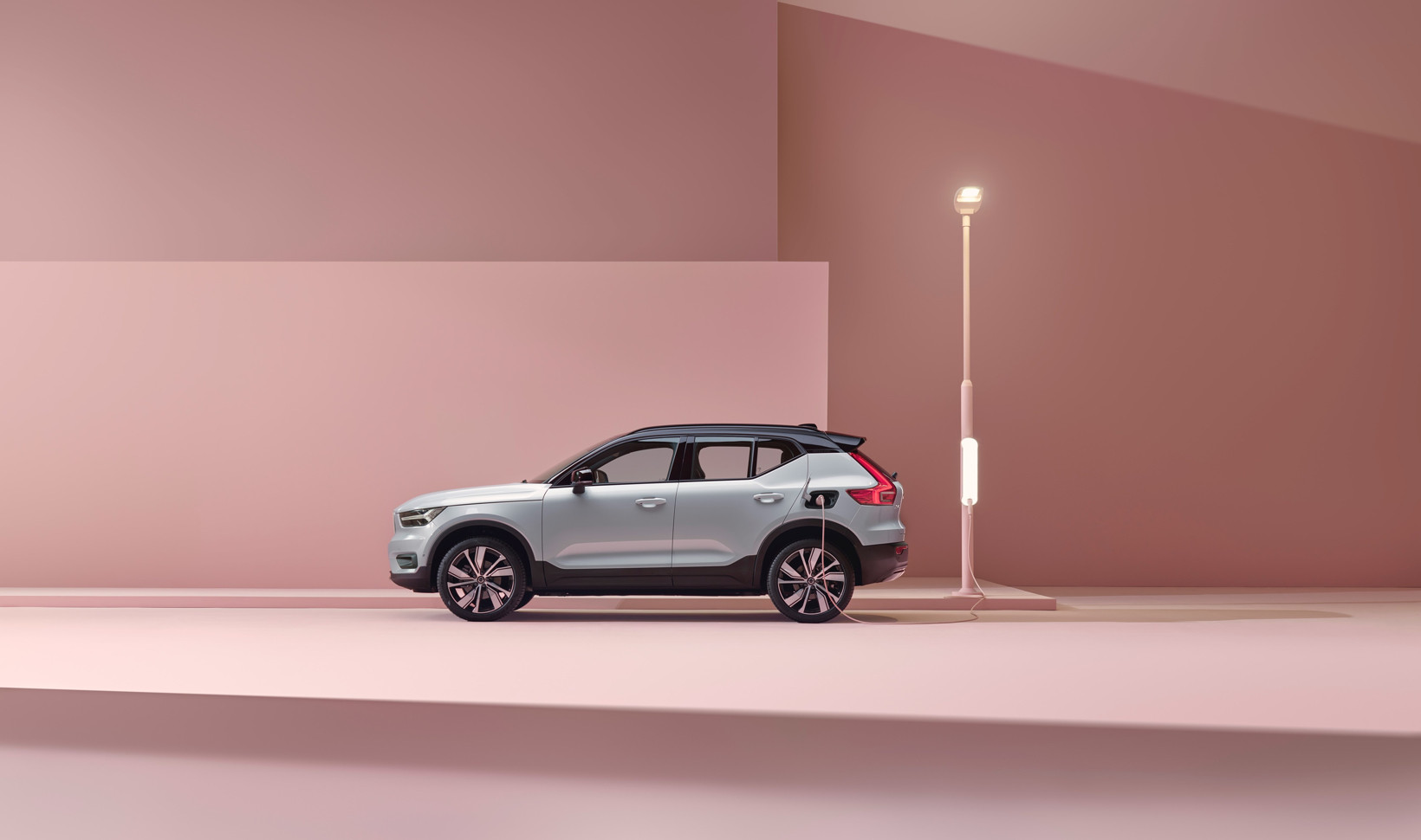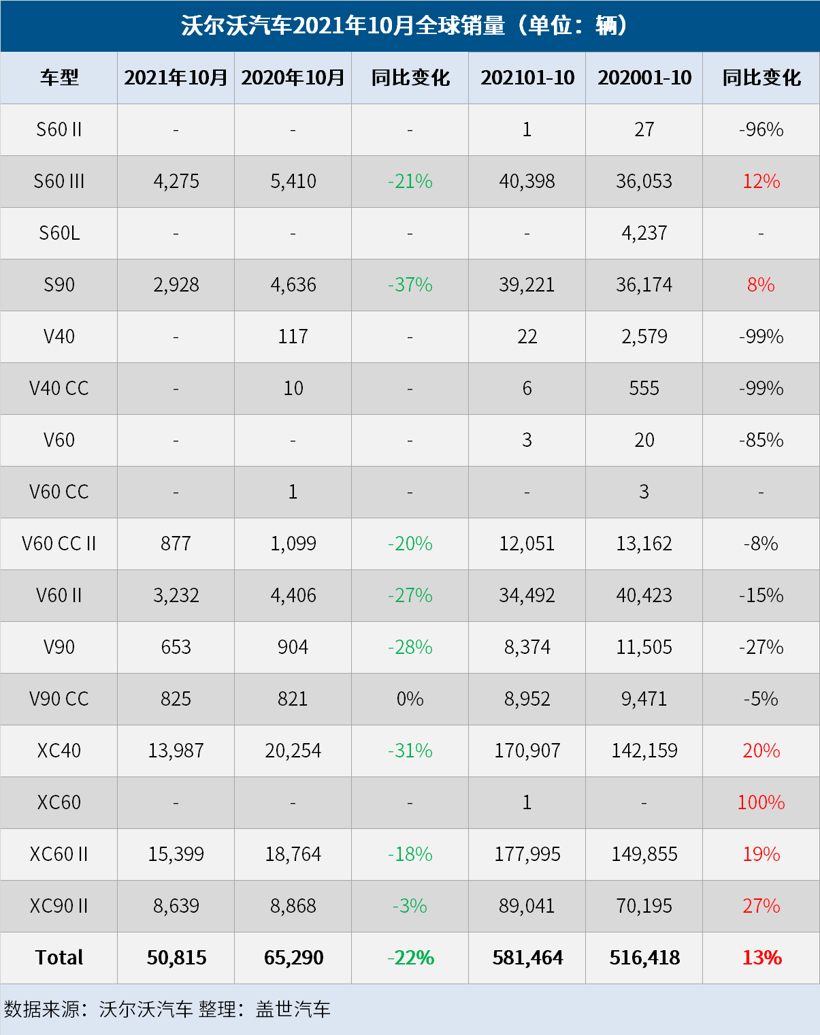The impact of the chip shortage continued, Volvo Cars sales fell 22.2% in October
Date: 2024-08-27 Click: 165
Gasgoo News According to foreign media reports, as Volvo Cars is struggling to cope with the chip supply problem, in October this year, Volvo Cars’ global sales were 50,815 units, a year-on-year decrease of 22.2%. This further shows that 2021 may be another time for automakers. It has been a difficult year.
Volvo mentioned in a statement issued on November 3 that due to "insufficient production", the number of cars sold by Volvo to various regions in October showed a downward trend. Among them, Volvo's sales in China fell the most, about one-third; sales in Europe and the United States fell by 21.5% and 18.6%, respectively. However, as the sharp increase in sales in the first half of the year offset the decline in October sales to a certain extent, Volvo's cumulative sales in the first October continued to increase, with a year-on-year increase of 12.6% to 581,464 vehicles.

It is worth mentioning that the sales of Volvo electric cars are also increasing. As the number of electric vehicles delivered by Volvo worldwide continues to rise, the sales of electric vehicles in October accounted for 31.5% of the company's total sales, and the sales of electric vehicles in the first 10 months accounted for 25.5% of the total sales.
In October, Volvo's sales of pure electric models were 2,841, accounting for 5.6% of the total sales. The increase in pure electric sales is related to the planned increase in production. In the first 10 months, Volvo's sales of pure electric models reached 18,261 units, accounting for 3.1% of total sales. In October, Volvo Cars also started producing pure electric C40 Recharge in Ghent, Belgium.

In October, among the 16 Volvo models, only the sales of the V90 CC model increased by 4 over the same period last year, and the sales of the remaining 15 models showed a downward trend. The XC60 II, XC40 and XC90 II are Volvo's best-selling models, and it is difficult to escape the fate of falling sales. The XC40 fell by nearly one-third, the XC60 II fell by 18%, and the XC90 II fell much lower than the XC40 and XC60 II. , Only 3%. The S90 lost the largest proportion of sales, falling from 4,636 units in the same period last year to 2,928 units, a drop of nearly 40%. Sales of V90 and V60 II fell by nearly 30%. Volvo is actively fighting against the shortage of semiconductors and offsetting the adverse effects of the shortage of semiconductors by giving priority to the production of best-selling models.
Thanks to the sharp increase in sales in the first half of the year, except for the V60 II and V90 models, Volvo's models that sold more than 10,000 in the first October maintained an upward trend. The XC60 II, XC40 and XC90 II were also Volvo's three best-selling models in the first October, with sales increasing by 19%, 20% and 27% year-on-year respectively.

According to data from AlixPartners, automakers are fighting a semiconductor shortage, which is expected to cause the industry to lose $210 billion in revenue this year.
It is unclear when the supply shortage will improve. Many automakers have alleviated the impact of the lack of cores by raising car prices and prioritizing the production of the most profitable models. However, component suppliers such as Continental and Faurecia have been hit hard.
Volvo Car CEO Hakan Samuelsson said last week that chip supply will return to normal and will not affect the company's long-term development.
As of 11:23 am Stockholm time, Volvo Cars shares fell 1.7%. The company's stock price rose sharply on the first day of listing last week.
